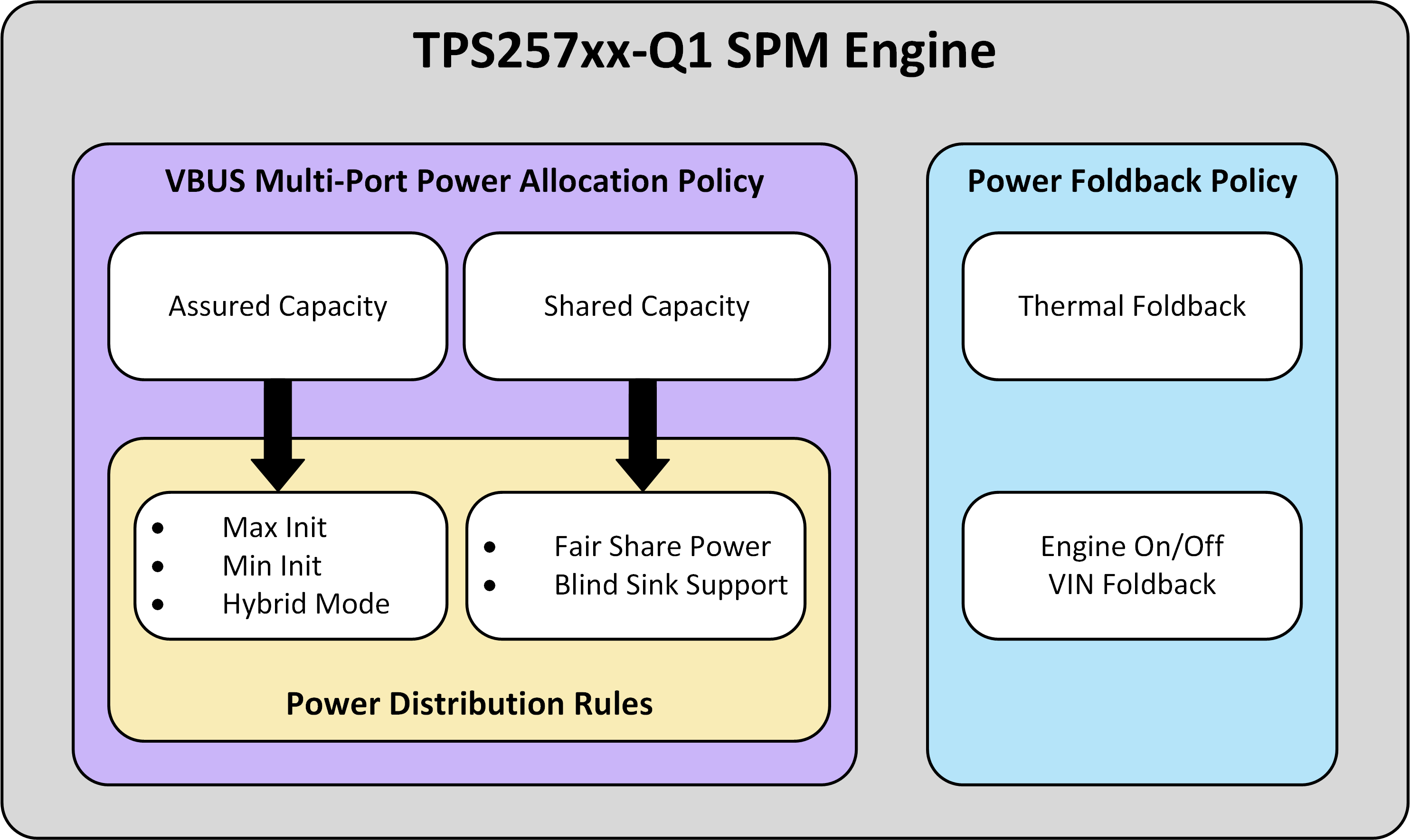SLVAFG6A December 2022 – November 2023 TPS25762-Q1 , TPS25772-Q1
2 SPM Engine Overview
The TPS257xx-Q1's SPM Engine contains two main subsystems (Figure 2-1): the Multi-Port Power Allocation Policy and the Power Foldback Policy. Note that the Multi-Port Power Allocation Policy is specific to the TPS25772-Q1 dual-port PD controller as the TPS25762-Q1 device is a single-port PD controller and contains only the Power Foldback Policy block. For the TPS25772-Q1, the two subsystems of the SPM Engine work in conjunction to support dynamic power adjustments in response to different types of power events.
 Figure 2-1 TPS257xx-Q1 SPM Engine Block Diagram
Figure 2-1 TPS257xx-Q1 SPM Engine Block DiagramThere are two types of Multi-Port Power Allocation Policies supported by the TPS25772-Q1: Assured Capacity Policy and Shared Capacity Policy. Only one policy can be enabled per SPM system. The Assured Capacity Policy allows power to be allocated to a port independent of the second port's status while Shared Capacity Policy allows the total available system power to be shared by both ports.
- Assured Capacity Policy: Source port has a fixed allocated amount of power and able to deliver its max power capacity independent of the second port's status. See Section 3.1 for more details.
- Shared Capacity Policy: Source port has a dynamically allocated amount of power and able to deliver up to its max power capacity depending on the remaining available system power that is shared with the second port. See Section 3.2 for more details.
The Multi-Port Power Allocation Policies regulates how the total system power is allocated to the ports. The Power Distribution Rules determine how the allocated power is distributed to connected Sinks. The Assured Capacity Policy and Shared Capacity Policy can be enabled with one of their respective power distribution methods as listed in the Power Distribution Rules block in Figure 2-1. These Power Distribution Rules are discussed in more detail in the subsequent sections.
The Power Foldback Policy supports dynamic power adjustment in response to power related activities such as thermal and supply voltage events to meet operational safety requirements and works in conjunction with the Multi-Port Power Allocation Policy. See Section 4 for more details.